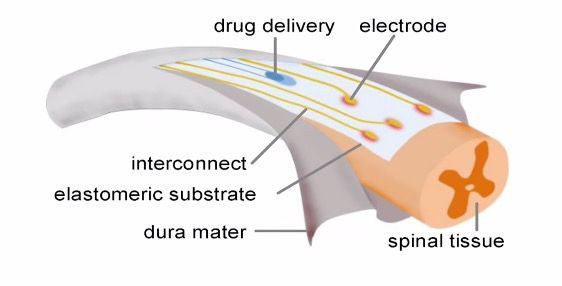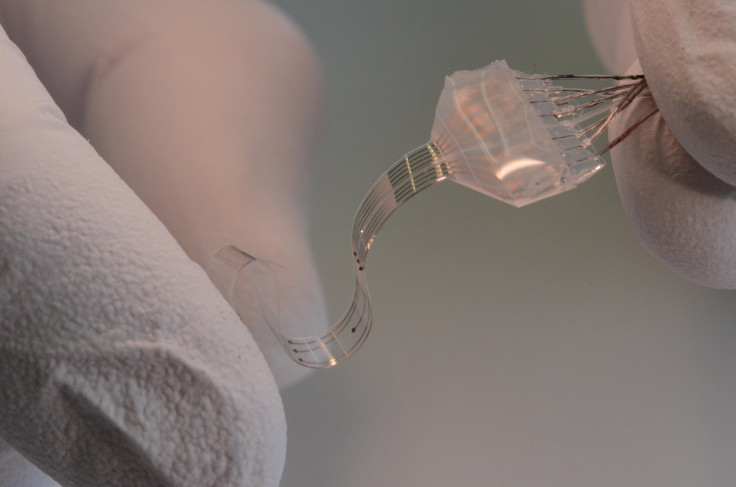Science may soon lead the paralyzed to walking again as a new cyborg-like technology is making waves in spinal cord injury research. Researchers at Ecole Polytechnique Fédérale de Lausanne (The Swiss Federal Institute of Technology in Lausanne) have developed a tiny, ribbon-like prosthetic which has restored movement in paralyzed rats.
The implant, dubbed “e-Dura,” for the way it mimics the soft tissue (Dura matter) surrounding the spine, looks like something out of a science fiction movie, but may bring the hope of walking again to paraplegics across the globe.

So what is e-Dura? Basically it’s a thin ribbon like prosthetic embedded with a number of electrodes. The prosthetic is implanted in soft tissue that lies across the spinal cord or brain of the individual with paralysis. The implant then delivers a series of electrical charges and chemicals to the affected area – much in the same way living tissue would behave if not damaged. The implant is designed in such a way that it is flexible and moves comfortably with the tissue surrounding the backbone.
The design of the implant is an important and “groundbreaking” development in neural prosthetic research as many times the body responds negatively to such technologies.
“Neural implants are system designed to study and treat the injured nervous system … and there are multiple technologies available but in the long term, very often they trigger inflammation and even rejection by the host,” says e-Dura researcher, Professor Stephanie Lacour. “Our innovation is that we have developed and implant that is soft and stretchable just like the surrounding tissue. The implant integrates electrical and chemical stimulation and yet remains fully elastic.”
When researchers tested the prototype device on paralyzed rats, they found it worked beautifully. The rats regained their ability to walk on their own again after a few weeks of training. The researchers were able to show that by chemically and electrically stimulating the spinal cord after injury, the rats could "sprint over ground, climb stairs and even pass obstacles."

“The result that we have obtained with this animal experimentation, show that we might have solved one of the biggest challenges for the next generation of surface electrode implants,” says Lacour.
Scientists working with the e-Dura research are very hopeful for the positive results the implant could bring to paralyzed individuals. If human trials prove successful, scientist believe the implants could last for up to 10 years before needing to be replaced.
“Our e-Dura implant can remain for a long period of time on the spinal cord or the cortex, precisely because it has the same mechanical properties as the dura mater itself. This opens up new therapeutic possibilities for patients suffering from neurological trauma or disorders, particularly individuals who have become paralyzed following spinal cord injury,” explains Lacour, in a paper on e-Dura.
While the e-Dura implant has primarily been tested as a treatment for paralysis, the implications for the prosthetic could be even larger. The researchers believe if the implant is successful in humans, it could have implications for epilepsy, Parkinson’s disease and pain management. The researchers behind the "e-Dura" spinal implant hope to begin clinical trials with humans in the near future in preperation for bringing the technology to market.














![[EG April 19] Best 'Stardew Valley' Mods That Will Change](https://d.player.one/en/full/226012/eg-april-19-best-stardew-valley-mods-that-will-change.png?w=380&h=275&f=955520b8313253ee3c39c791f6210f38)



